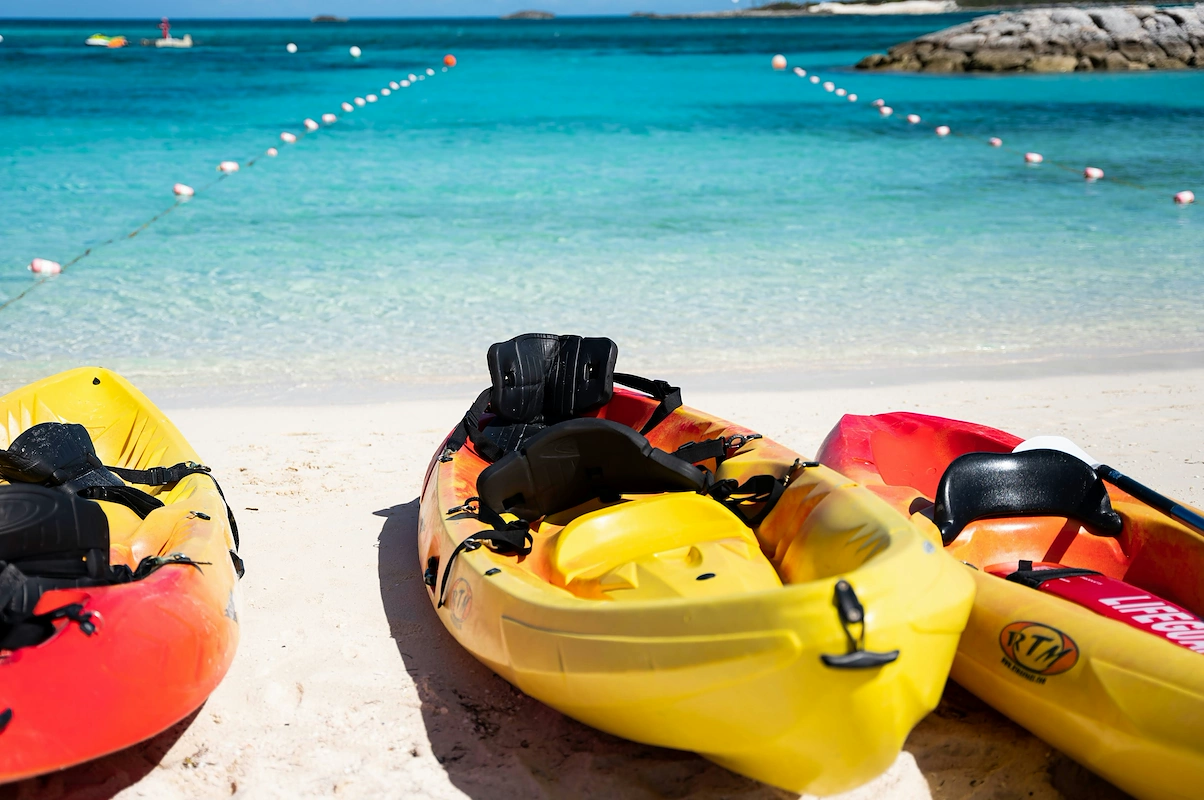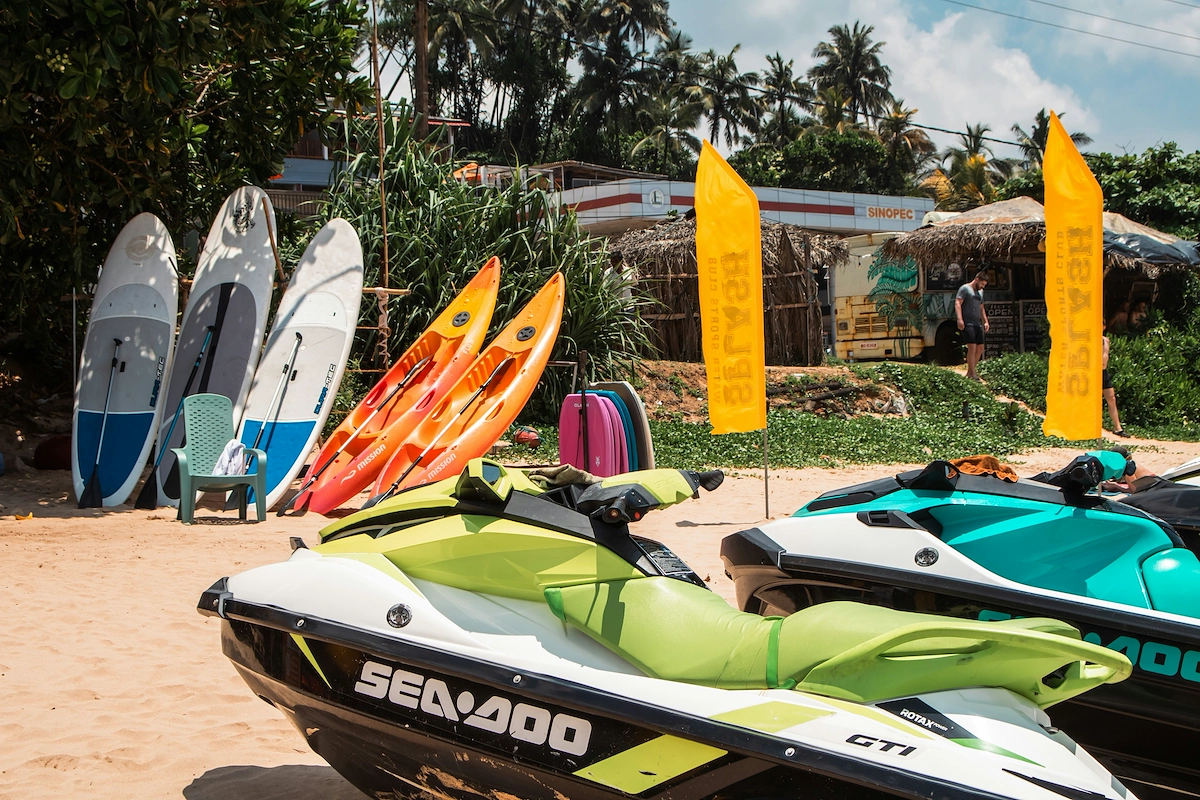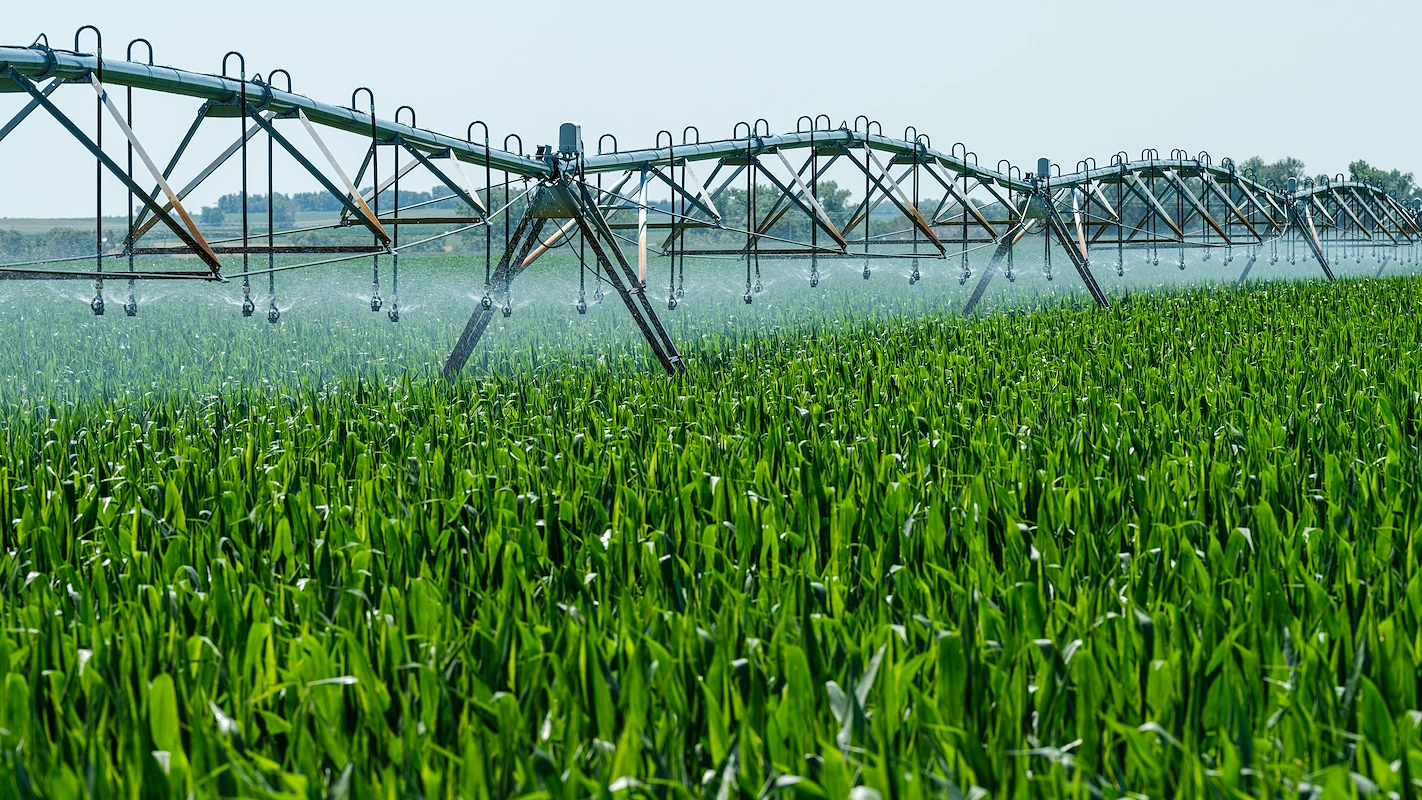Starting a BBQ business is a rewarding venture that combines a passion for slow-smoked flavor with sharp business savvy. The industry pulls in billions of dollars annually, fueled by a steady demand for authentic barbecue at family gatherings, corporate events, and community festivals.
This guide will take you through the practical steps of validating your business concept, securing funding, obtaining necessary licenses, and acquiring the right equipment to help you launch a successful BBQ business in the U.S.
Step 1: Plan your business and validate your concept
Start by researching your local market. Visit farmers' markets and food truck rallies to see what sells. Use Google Trends to check local search interest for terms like "BBQ catering" or "smoked brisket" to gauge online demand before you invest a single dollar.
Next, analyze your competition using Yelp and Google Maps. Note their menu prices, signature dishes, and customer reviews. Many new owners fail by simply copying others. Instead, find a gap in the market. Perhaps your area is missing authentic Carolina-style pulled pork or Texas-style brisket.
Estimate your startup costs
Your budget will shape your launch. A commercial-grade smoker can run from $2,000 to $15,000. A food truck or trailer is a significant investment, often $15,000 to $100,000. You might consider a less expensive pop-up tent setup to start.
- Initial Food Inventory: $1,000 - $3,000
- Licenses & Permits: $500 - $2,000
- Website & Marketing: $500 - $2,500
Here are 3 immediate steps to take:
- Visit three local competitors to sample their food and analyze their pricing.
- Use Google Trends to compare search volume for different BBQ styles in your city.
- Draft a preliminary budget with estimated costs for your smoker, setup, and initial inventory.
Step 2: Establish your legal structure and secure licenses
Most new BBQ owners form a Limited Liability Company (LLC). This structure protects your personal assets, like your home and car, if the business faces a lawsuit. It is a smart move from day one.
An LLC also offers tax flexibility. Profits pass through to your personal tax return, which avoids the double taxation that corporations face. You can file with your Secretary of State, often for under $300.
Navigate permits and regulations
First, get a free Employer Identification Number (EIN) from the IRS website. You will need this number to open a business bank account, file taxes, and hire any future employees. The online application takes just a few minutes.
Your local health department is your most important contact. They issue the Food Facility Health Permit, which can cost between $300 and $1,000. This process involves inspections, so start the application 60-90 days before your target launch date.
You will also need a general business license from your city or county and a seller's permit from your state's tax agency. For yourself and any staff, a Food Handler's Permit is required, usually costing under $50 per person.
Here are 3 immediate steps to take:
- File for an LLC with your state's Secretary of State office.
- Apply for a free Employer Identification Number (EIN) online with the IRS.
- Download the food facility permit application from your local health department's website.
Step 3: Secure insurance and manage risk
General Liability insurance is your foundation. It protects you from claims like food poisoning or a customer tripping over your equipment. A policy with $1 million in coverage is standard for food businesses and typically costs between $500 and $1,500 annually.
Key insurance policies
Beyond general liability, several other policies protect your investment. Your specific needs will depend on whether you have a trailer, employees, or a physical location. Many new owners underestimate the unique risks of a mobile BBQ setup.
- Commercial Auto Insurance: This covers your food truck or trailer. Expect to pay $1,500 to $4,000 per year. A personal auto policy will not cover business use.
- Commercial Property Insurance: This protects your smokers, warmers, and other equipment from theft or fire, whether on-site or in transit.
- Workers’ Compensation: This is required in most states if you hire even one employee. Premiums vary based on your state and total payroll.
You might want to get quotes from specialists like the Food Liability Insurance Program (FLIP), Insureon, or The Hartford. They understand food-specific risks better than general agents. Also, confirm your policy explicitly covers fire damage from smokers, a frequent cause of claims.
Here are 3 immediate steps to take:
- Request a quote for a $1 million general liability policy.
- Contact a specialist provider like FLIP to compare their coverage with a general insurer.
- Ask potential insurers if they allow adding an "additional insured" to your policy for events.
Step 4: Find a location and buy equipment
For a mobile BBQ business, your primary location is a commissary kitchen. You need a licensed commercial space for food prep and storage. Look for a shared kitchen with 200-500 square feet of dedicated space. When you negotiate a lease, try to secure a one-year term to start.
Select your core equipment
Your smoker is the heart of the operation. While new units are reliable, you can find great deals on used equipment from restaurant auction sites. This approach can cut your initial equipment budget by 30-50%. You will also need a few other items to meet health codes.
- Commercial Smoker: $5,000 - $15,000 (new)
- Hot Holding Cabinet: $1,500 - $3,000
- Stainless Steel Prep Tables: $200 - $500 each
- Three-Compartment Sink: $400 - $1,000
For supplies, check Restaurant Depot for bulk meat purchases. For wood, find local farms or specialty suppliers. You will save money if you buy wood by the quarter or half cord instead of in small bags from a retail store.
Here are 3 immediate steps to take:
- Research three local commissary kitchens and compare their monthly rental fees.
- Browse a restaurant auction website for prices on used commercial smokers.
- Contact a local wood supplier for a price on a half cord of oak or hickory.
Step 5: Set up payment processing
Accepting payments
For catering jobs, you should require a 50% deposit upfront with a signed contract. This secures the date and covers your initial food costs. For walk-up sales at markets or events, payment is immediate. This approach protects your cash flow.
When you choose a payment solution, look for low transaction fees and portability. Many processors charge between 2.5% and 3.5% plus monthly fees, which can eat into your profits. You also want quick access to your funds, not a three-day wait.
For a BBQ business that needs to accept payments on-site or on-the-go, JIM offers a streamlined solution. With it, you can accept debit, credit, and digital wallets directly through your smartphone—just tap and you are done.
At just 1.99% per transaction with no hidden costs or extra hardware, it is a strong option for markets or events. This rate is lower than the typical 2.5% to 3.5% that other providers charge, which helps protect your margins.
Getting started is straightforward:
- Get Started: Download the JIM app for iOS.
- Make a Sale: Type the sales amount, hit sell, and ask your customer to tap their card or device on your phone.
- Access Funds: Your money is available right on your JIM card as soon as the sale is done—no waiting for bank transfers.
Here are 3 immediate steps to take:
- Draft a simple catering contract that requires a 50% deposit.
- Compare the total cost of two other mobile payment solutions to JIM's 1.99% flat rate.
- Download the JIM app for iOS to explore its interface.
Step 6: Secure funding and manage your finances
An SBA Microloan is a great starting point. These loans range from $5,000 to $50,000 and are designed for new businesses. Lenders typically want to see a credit score above 680. Interest rates often fall between 8% and 13%.
For just your smoker or trailer, consider equipment financing. Approval is faster than a traditional loan, but interest rates can be higher, from 8% to 20%. This option lets you preserve cash for other startup needs.
Plan your working capital
You need cash on hand for the first six months. Budget $10,000 to $20,000 for working capital. This covers your initial meat and wood inventory, fuel, and event fees before sales become consistent. Many new owners miscalculate this and run out of money after buying equipment.
Here are 3 immediate steps to take:
- Review the requirements for an SBA Microloan on the official SBA website.
- Get a sample interest rate from an equipment financing company.
- Create a spreadsheet to project your first six months of operating expenses.
Step 7: Hire your team and set up operations
Build your crew
Your first hires are critical. You will likely need a Pitmaster to manage the smoker and a Prep Cook who can also handle sales. A skilled Pitmaster might earn $18-$25 per hour, while a versatile Prep Cook/Cashier could be in the $15-$20 range.
Ensure every person on your team, including you, has a valid Food Handler's Permit. Many new owners hire friends or family, which can work well if roles are clear. Define responsibilities in writing from the start to prevent misunderstandings down the road.
Manage scheduling and labor costs
For a mobile business with a variable schedule, you might want to use an app like 7shifts or When I Work. These platforms make it easy to post schedules for upcoming farmers' markets or catering gigs and let staff confirm their availability.
Keep a close eye on your labor costs. A good target is to keep payroll between 25% and 35% of your total revenue. If you find your labor costs are higher, you may need to adjust your menu prices or find efficiencies in your schedule.
Here are 3 immediate steps to take:
- Draft simple job descriptions for a Pitmaster and a Prep Cook.
- Confirm the cost and process for obtaining a Food Handler's Permit in your county.
- Explore a free trial for a scheduling app like 7shifts to see how it works.
Step 8: Market your business and find customers
Your marketing should start with high-quality photos. Post pictures of your glistening brisket and smoky ribs on Instagram and Facebook. A single great photo can generate more catering leads than a week of paid ads. Show the process, not just the final product.
Build your digital storefront
You will want a simple website with your menu, catering packages, and contact information. Also, immediately claim your Google Business Profile. This is the most direct way for customers to find "BBQ near me" and see your reviews, location, and hours.
Many new owners focus only on online ads and miss out on local partnerships. You could contact a local brewery and offer to set up for a weekend. They get a food option to keep customers around longer, and you get direct access to their hungry patrons.
Get out in the community
Farmers' markets and local festivals are your best friends. A booth might cost between $50 and $150 for the day, but it puts your food directly in front of hundreds of potential customers. Use these events to test menu items and build a following.
From your very first sale, start an email list. Offer a free side or a discount on a future order in exchange for an email address. This direct line to your customers is more valuable than any social media following. It is a common mistake to chase "likes" instead of leads.
Here are 3 immediate steps to take:
- Claim your free Google Business Profile and upload at least five high-quality photos.
- Draft an email to one local brewery proposing a weekend pop-up collaboration.
- Create a simple sign-up sheet to start building your customer email list at your first event.
Step 9: Price your menu for profit
Calculate your food cost
Your goal is a food cost between 25% and 35% of your menu price. A simple formula is to multiply your raw ingredient cost by three. If a pound of raw brisket costs you $5, you should price the finished product around $15 per pound to start.
Many new owners forget to account for meat shrinkage. A brisket can lose 40-50% of its weight during cooking. You must factor this loss into your cost per finished pound, otherwise your profit margins will suffer.
Set your menu prices
For walk-up sales, price by the half-pound or pound. Brisket might sell for $25-$30 per pound, while pulled pork could be $18-$22. For catering, you will price per person, typically from $20 to $35, depending on the menu and service level.
Before you finalize prices, look at what your top three competitors charge. You do not have to be the cheapest. Customers will pay more for quality, so focus on value instead of a price war. Your unique recipes and quality can justify a higher price point.
Here are 3 immediate steps to take:
- Calculate the final cost per pound for your signature meat, including a 40% shrinkage factor.
- Research the menu prices of three direct competitors in your area.
- Draft two sample catering packages with per-person pricing.
Step 10: Maintain quality and scale your operations
Consistency is what builds a loyal following. Create an internal quality checklist. For example, your brisket must always reach an internal temperature of 203°F, and your pulled pork should have a distinct smoke ring at least a quarter-inch deep.
Measure your performance
Track your food waste percentage. A well-run operation should aim for under 5%. Many owners focus only on sales, but waste quietly eats your profits. Also, use simple feedback cards at events to get direct customer input on food and service.
Once you have consistent quality, you can think about growth. If you turn down more than two catering jobs a month due to capacity, it is a clear signal to invest. This could mean a second smoker or a dedicated catering manager.
When you regularly handle five or more catering events per month, manual tracking becomes risky. You might want to look into catering software like FoodStorm to manage bookings and prevent double-booking your calendar.
Here are 3 immediate steps to take:
- Create a quality checklist for your main menu items, noting target temperatures and appearance.
- Set a benchmark for when to hire your next employee, such as turning down three catering jobs in one month.
- Research a catering management software option for when you reach five monthly events.
Starting a BBQ business is a journey of passion. Remember, consistency in your smoke and flavor is what builds a loyal following. You have the roadmap. Now go build your dream, one perfectly smoked brisket at a time.
As you serve customers, you will need a simple way to get paid. JIM turns your smartphone into a card reader, so you can accept payments anywhere for a flat 1.99% fee with no extra hardware. Download JIM to get started.















